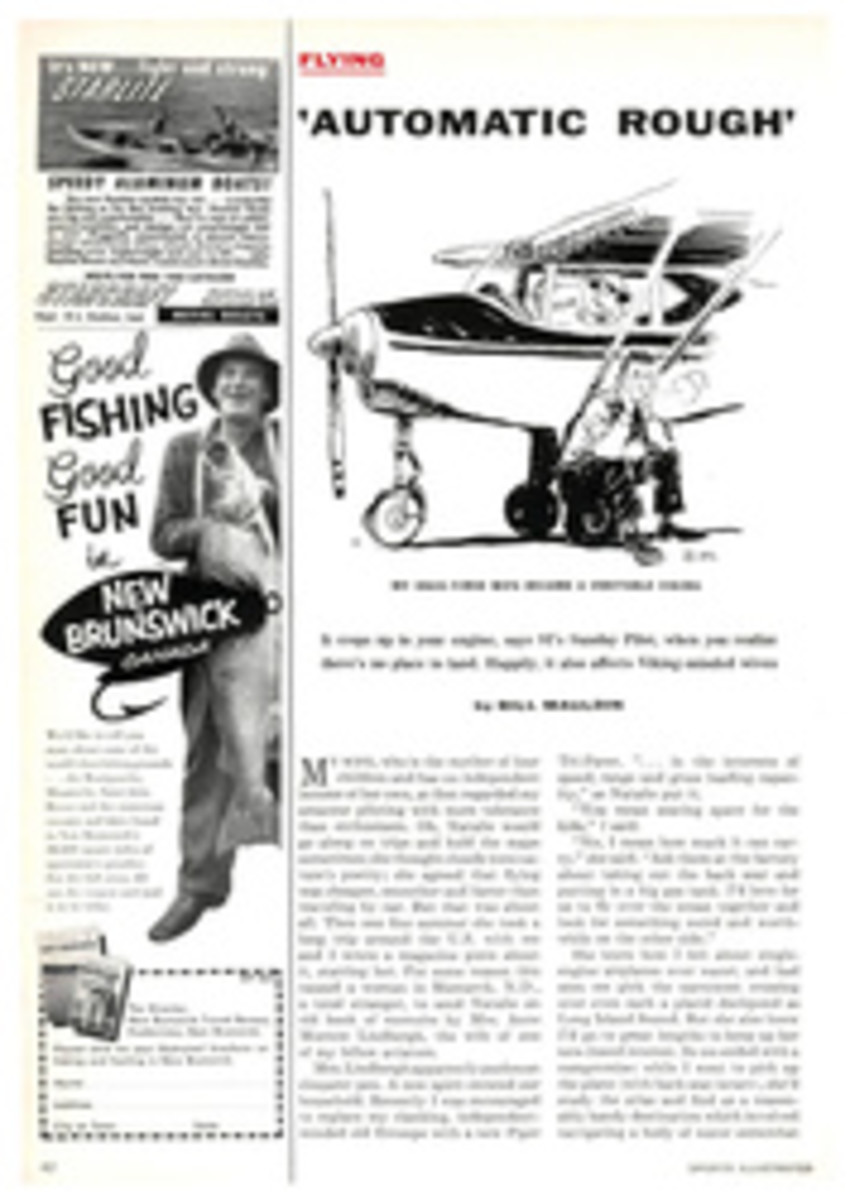
THE BENGAL BOUTS
When Columnist Budd Schulberg went to South Bend to accept Notre Dame's boxing award (SI, March 28), he saw something that renewed his hope for the future of the sport. Schulberg's report:
On an average of once a week some kindly soul comes up to me and lowers this boom: I simply can't understand what you see in boxing. Two men whacking the whey out of each other like a couple of Neanderthals! I think it's brutal and degrading. I'd like to see it abolished.
Next time this little firecracker is tossed in my path, I'm going to say: Go see the Notre Dame Bengal Bouts. You'll see boys battling harder for the University championships than some heavyweights have fought for the championship of the world. You will see contestants beautifully conditioned and boxing under rules of safety precaution that have precluded any serious injury in the quarter-century history of the bouts. Here are boys who will fight their hearts out in the five-day tournament for pride and the pure sport of it. At the finals recently, 4,500 people—twice as many as paid admissions at Madison Square Garden a few nights later—roared their approval and shouted on their favorites throughout the rousing 10-match card. They weren't rooting the underdog because they had bet on him and could double their money. This vibrant gathering of undergraduates, faculty, priests and townspeople was as pure as the boxers, and they rocked the field house with applause for both opponents as match after match produced a total absence of clinches, non-stop punching and un-corrupted courage.
"SEE YOU AT THE BOUTS"
Professional boxing has virtually died in New Jersey and many other states where it once flourished. But on the campus at Notre Dame it is a lively, major sport, outdrawing basketball, swimming, baseball and every other activity except King Football. When I spoke to Father Hesburgh, president of the University, at luncheon on the day of the finals, he said, "See you at the bouts tonight," and that was a remark I was to hear throughout the day as I toured the campus from the Rockne Memorial field house to the English classes. Students tipped me off to watch Harry Higa, the defending featherweight champion from Honolulu. And Pat Cannon, a fighting redheaded Irish senior who had been knocking on the door of the middleweight title for several years.
When I entered the arena the band was playing "When the Saints Come Marching In," and this seemed a happy choice, for proceeds go to support the Holy Cross mission houses in Bengal—hence the name Bengal Bouts.
Boxing has been a popular sport at Notre Dame since 1923, when it was first introduced by Knute Rockne. The association with the Bengal Mission began in 1931 and has been an annual feature of the Notre Dame sports program ever since. On the Notre Dame campus they credit a quietly vigorous and purposeful, fatherly little man, Dominic "Nappy" Napolitano, with having established the ideal atmosphere of sportsmanship, safety and lack of any commercial taint for these bouts. Nappy went to Notre Dame from Pleasantville, New York in the late 20s, boxed there as a featherweight, fell in love with the campus, and—except for a three-year hitch as boxing instructor for the Navy—has lived and taught there ever since. Each year, some three months before the Bengal Bouts, 15 to 200 boys, many of whom have never had a glove on, put themselves in Nappy's hands to prepare them for the tournament that winds up the eve of St. Patrick's Day.
Throughout the training period it is no exaggeration to say that Nappy worries about the welfare of each contestant with the personal concern of a father. He sees that they do their two-mile roadwork each day, their calisthenics, he instructs each boy personally and supervises their daily workouts with each other. By the time they are ready to enter the ring the second week of March they have trained as carefully, as intensely and as long as Rocky Marciano prepares for a defense of his title.
THE PUREST CONTEST
But Rocky's fights and the ones Nappy Napolitano directs are worlds apart. No Bengal Bouter is allowed to take the kind of punishment Ezzard Charles absorbed from Rocky last summer. Through Nappy's advice, the padding on the ring floor is two inches thick and the referee is instructed to stop a bout the moment an opponent is dazed and in danger of being hit at will. "This is a contest, like any other sport," Napolitano says. "In a sense it is the purest contest we have. When it ceases to be that, stop it. Don't let the boy get hurt."
Out at Notre Dame this stocky, paternal little fellow Nappy, the genial coach and director for the bouts; the handball champ, philosophical Father Tom Brennan; the campus Knights of Columbus chapter which sponsors the bouts; and the boys who keep punching from bell to bell can show you what boxing can be like at its honest best. They have never lost sight of the fact that boxing, for all its seamy, nether side, is a great, basic and undeniable competitive sport.
Best fight—or fights—of the current week: the NCAA championships at Pocatello, Idaho, with 17 schools and 62 boxers entered; and the Golden Gloves Intercity matches at Chicago. No television, worse luck.
ILLUSTRATION
"...and in this corner, wearing—"
PHOTO

